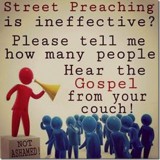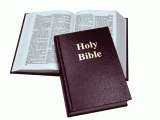 Please first read the Introduction as to why these blog posts are necessary. Back to Part 2 Index.
Please first read the Introduction as to why these blog posts are necessary. Back to Part 2 Index.
THE MASS: Error versus Truth
The Catholic Church Teaches (ERROR)
11. The Mass is an unbloody sacrifice which atones for the sins of the living and the dead [RC Catechism 1367, 1371, 1414].
1367 The sacrifice of Christ and the sacrifice of the Eucharist are one single sacrifice: "The victim is one and the same: the same now offers through the ministry of priests, who then offered himself on the cross; only the manner of offering is different." "And since in this divine sacrifice which is celebrated in the Mass, the same Christ who offered himself once in a bloody manner on the altar of the cross is contained and is offered in an unbloody manner… this sacrifice is truly propitiatory."188
188 Council of Trent (1562): Doctrina de ss. Missae Sacrificio, c. 2: DS 1743; cf. Heb 9:14, 27.
1371 The Eucharistic sacrifice is also offered for the faithful departed who "have died in Christ but are not yet wholly purified,"191 so that they may be able to enter into the light and peace of Christ:
Put this body anywhere! Don’t trouble yourselves about it! I simply ask you to remember me at the Lord’s altar wherever you are.192
Then, we pray [in the anaphora] for the holy fathers and bishops who have fallen asleep, and in general for all who have fallen asleep before us, in the belief that it is a great benefit to the souls on whose behalf the supplication is offered, while the holy and tremendous Victim is present…. By offering to God our supplications for those who have fallen asleep, if they have sinned, we . . . offer Christ sacrificed for the sins of all, and so render favorable, for them and for us, the God who loves man.193
191 Council of Trent (1562) DS 1743.
192 St. Monica, before her death, to her sons, St. Augustine and his
brother; Conf. 9, 11, 27: PL 32, 775.
193 St. Cyril of Jerusalem, Catech. myst. 5, 9. 10 PG 33, 1116-1117.
1414 As sacrifice, the Eucharist is also offered in reparation for the sins of the living and the dead and to obtain spiritual or temporal benefits from God.
The Bible Teaches (TRUTH)
Without the shedding of blood there is no forgiveness of sins (Leviticus 17:11; Hebrews 9:22).
11 For the life of the flesh is in the blood: and I have given it to you upon the altar to make an atonement for your souls: for it is the blood that maketh an atonement for the soul. ~ Leviticus 17:11
22 And almost all things are by the law purged with blood; and without shedding of blood is no remission. ~ Hebrews 9:22

Filed under: Roman Catholicism, Teachings | Tagged: Gospel of Jesus Christ, Jesus Christ, Protestantism, Roman Catholics, The Bible, The Pope, The Vatican | Leave a comment »


















 Please first read the
Please first read the 
 Please first read the
Please first read the 
 Please first read the
Please first read the 
 Please first read the
Please first read the 
 Please first read the
Please first read the 
 Please first read the
Please first read the 
 Please first read the
Please first read the 
 Please first read the
Please first read the 
 Please first read the
Please first read the 

 Joshua Project
Joshua Project The Biblical Basis of Missions
The Biblical Basis of Missions

![The Biblical Nativity (Birth) of our Lord Jesus Christ according to the Holy Scriptures in the Gospel of Luke 1 & 2 [see Purge the leaven … blog post] The Nativity of our Lord Jesus Christ ~ Luke 1 & 2 The Biblical Nativity (Birth) of our Lord Jesus Christ according to the Holy Scriptures in the Gospel of Luke 1 & 2 [see Purge the leaven … blog post]](https://luke923evangelism.files.wordpress.com/2012/12/birth-of-christ-e1374168223523.png)



